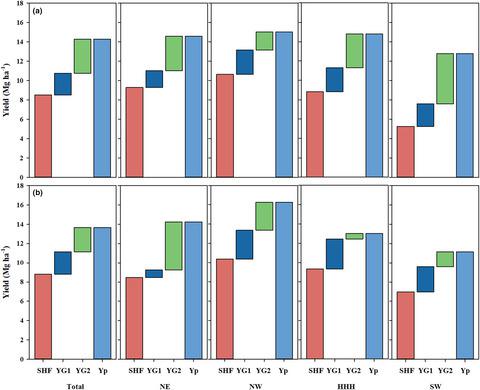当前位置:
X-MOL 学术
›
Food Energy Secur.
›
论文详情
Our official English website, www.x-mol.net, welcomes your feedback! (Note: you will need to create a separate account there.)
Public–private partnership model for intensive maize production in China: A synergistic strategy for food security and ecosystem economic budget
Food and Energy Security ( IF 5 ) Pub Date : 2021-07-27 , DOI: 10.1002/fes3.317 Xingbang Wang 1, 2, 3 , Wushuai Zhang 1, 2 , Prakash Lakshmanan 2, 4, 5 , Chunrong Qian 6 , Xuanliang Ge 6 , Yubo Hao 6 , Junhe Wang 7 , Yutao Liu 7 , Huiying Yang 7 , Zhongdong Zhang 8 , Zhengyu Guo 8 , Shuai Gong 8 , Tinglu Fan 9 , Jianjun Zhang 9 , Guohao Dong 10 , Dongfeng Shen 11 , Yuhong Wang 11 , Weidong Cheng 12 , Juzhi Lv 12 , Xiuquan Wang 13 , Tingqi Lu 13 , Chaojing Yin 14 , Huan Yang 1 , Jinlin Luo 1 , Yuan Qiao 1 , Zhi Yao 1 , Xinping Chen 1, 2
Food and Energy Security ( IF 5 ) Pub Date : 2021-07-27 , DOI: 10.1002/fes3.317 Xingbang Wang 1, 2, 3 , Wushuai Zhang 1, 2 , Prakash Lakshmanan 2, 4, 5 , Chunrong Qian 6 , Xuanliang Ge 6 , Yubo Hao 6 , Junhe Wang 7 , Yutao Liu 7 , Huiying Yang 7 , Zhongdong Zhang 8 , Zhengyu Guo 8 , Shuai Gong 8 , Tinglu Fan 9 , Jianjun Zhang 9 , Guohao Dong 10 , Dongfeng Shen 11 , Yuhong Wang 11 , Weidong Cheng 12 , Juzhi Lv 12 , Xiuquan Wang 13 , Tingqi Lu 13 , Chaojing Yin 14 , Huan Yang 1 , Jinlin Luo 1 , Yuan Qiao 1 , Zhi Yao 1 , Xinping Chen 1, 2
Affiliation

|
Small farms are the mainstay of maize production in China. Its productivity is relatively low despite large farm inputs and the associated environmental footprints. Here, we studied public–private partnership (PPP) model for sustainable intensification of maize production to achieve co-benefits of food security and environmental sustainability. The PPP model enabled the development of an effective partnership by bringing complementary skills, knowledge, proprietary products and technologies, and resources of public research community and private enterprises to create a new, operational maize farming system in China. We conducted on-farm research with farmer participation in four major maize-growing regions spanning temperate to sub-tropical zones in China for 2 years. The PPP model achieved 78.7% of maize yield potential compared with 61.8% realized in smallholder farm (SHF) (11.0 Mg ha−1 vs. 8.6 Mg ha−1). Overall, environmental externalities of PPP were up to 32.7% lower than that of SHF, depending on the region studied. PPP significantly reduced reactive nitrogen losses by 31.3%–35.5% compared with SHF in both years. There was no significant difference between PPP and SHF for greenhouse gas emission in 2018, but it was significantly lower in PPP (19%) compared to SHF in 2019. Similarly, PPP significantly reduced soil acidification potential (by 10.1%–42.2%) and eutrophication of waterbodies (21.5%) in comparison to SHF. Overall, the net ecosystem economic budget increased 277 USD ha−1 with PPP. The PPP model provides new insights into improving food security and ecosystem and economic budget. As a logical progression to our research, future work should focus on (a) the reasons for the persistence of inter-regional yield gap in PPP model and (b) to gain a better understanding of socioeconomic drivers critical for successful PPP in different maize-growing regions.
更新日期:2021-07-27



























 京公网安备 11010802027423号
京公网安备 11010802027423号